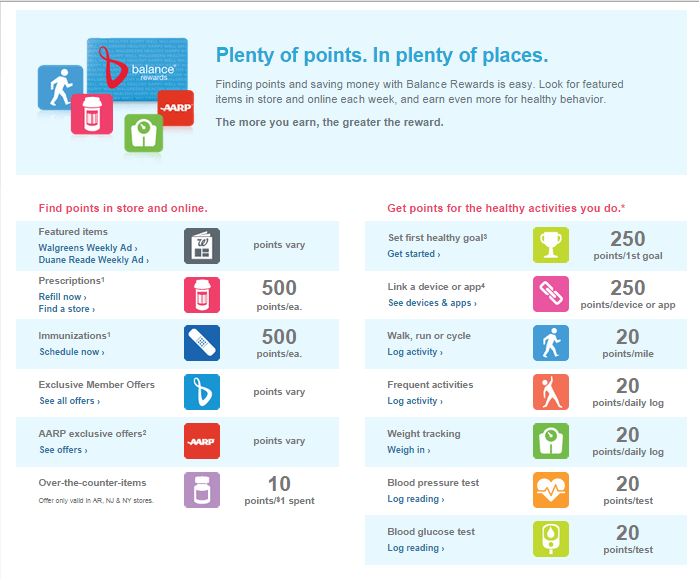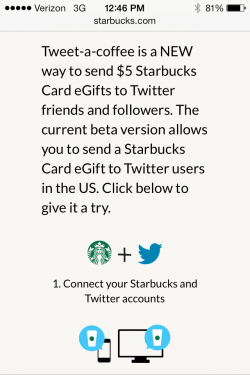Customer loyalty and retention programs are a great way to boost sales and revenue. But they can be even more valuable when it comes to increasing satisfaction and ensuring the retention of your high-value customers. According to Forrester Research, loyalty programs today are doing much more than driving more purchases and bigger profits. In their recent survey of loyalty program marketers, they found that these programs are being used to help organizations ensure more meaningful relationships across the customer life cycle. In fact, 70% said the top objective was customer retention and 64% said they use them to drive engagement.

There are many different types of loyalty programs. Most are built around using points, discounts, member-only offers, and so on, to get people to sign up – and continue to buy. It’s that last part, “continue to buy,” that’s tricky. Loyalty programs often see amazing sign-up rates, but disappointingly low engagement rates. Why is that?
Let’s think of the experience from the consumers’ point of view. How many times have you opted into a program, only to give up on it because it was too difficult? Or just not worth your time? Is your wallet filled with cards encouraging you to buy 50 burritos to get one free? Or a credit card that earns rewards points, but makes you jump through ten different hoops to redeem them? You soon realize that your time is worth more than whatever that program is offering.
Loyal Customers Are Great for ROI
We all know that keeping customers dedicated to your brand isn’t easy – and in today’s digital, mobile, and hyper-connected age, your customers have more distractions (and get more offers) so it’s getting even more challenging. But it’s one of the smartest business objectives you can pursue. Consider these facts from the Direct Marketing Association:
- It costs six to seven times more to acquire a new customer than to retain an existing one.
- The average company loses between 10 and 30% of its customers annually.
- Seven out of 10 service providers cite customer retention and loyalty as critical factors for driving growth.
Clearly, building loyalty is critical, but it’s not easy. In fact, according to research from COLLOQUY and FanXchange, more than half of loyalty-program members in the U.S. (54%) are unhappy with the reward options offered by their favorite brands, and 48% have experienced frustration during the reward redemption process. This signals an opportunity: If you can get it right, you can gain an edge over your competition.
5 Mandates for B2C and B2B Loyalty Programs
Whether you’re developing a loyalty program geared to consumers or business buyers, there are critical factors you need to consider. Here are five ways to make sure your program hits the mark.
1. Deliver Clear Value
It’s not enough to offer VIP or Gold Star status to customers; it has to be crystal clear what those things mean. You might want to offer incentives for enrolling, but whatever you do, make it very evident what customers get for taking part. A gift certificate? Miles? Points toward specific goals? According to COLLOQUY, 93% of people rate the types of rewards offered as either “very important” or “somewhat important” when deciding to engage in a program. But if they don’t know what they’re getting, they’ll drop out, and re-engaging them can be difficult.
American Eagle Outfitters makes it simple for customers to sign up for their loyalty program, and they do a great job of explaining the value proposition to prospective participants. They also send an email welcoming members to the program with a temporary card, a recap of the benefits and an opportunity to earn points by joining the mobile alert program.
2. Keep It Simple
Rewards quickly become unrewarding when people find it hard to participate. Does your program have tiers? What are the benefits of each, and what does it take to achieve each level? What are the limitations and exclusions? Don’t leave the rules for the fine print. If people understand what they need to do in order to take part in your program, they might actually do it. If it’s confusing, they won’t.
For example, Walgreens has a Balance Rewards program that awards points based on store purchases. However, you have to buy specific products from a participating store during a particular promotion period. Plus, the number of points varies based on the product. Fish oil pills will earn you 50 points for every eligible dollar you spend. If you’re buying cashew snacks, you need to buy $10 or more of a particular brand to get 2,000 points. You also get points for filling prescriptions and having your blood pressure checked. In effect, you have different reward systems for different products and services. That’s asking your customers to remember, and track, a lot of different things.
3. Make It Relevant for Both B2C and B2B
Don’t just focus on adding members. To get results, you need those members to actively participate. And that means making sure the bonuses and benefits you offer are tailored to the needs and interests of your participants. Once you’ve figured out what appeals to your most valuable customers, you’ll be able to customize rewards to specific segments of your audience. If you were a paper goods manufacturer, for example, you would want to consider the needs of different types of customers. Are you reaching out to consumers who buy greeting cards? Small business owners who sell stationery? Corporate clients who buy envelopes in bulk for 200 locations? Each group has different needs and goals, and different motivations.
B2B loyalty programs are becoming more common – and with good reason. In the most successful customer retention programs, the benefits are tailored to the business audience. MasterCard addresses B2C and B2B in distinctly different ways. They provide a number of different credit cards, some better for consumers, others tailored for business. Each has its own rewards. For consumers, MasterCard took advantage of their sponsorship of Beyonce’s world tour and offered people the chance to experience “VIP Priceless” events such as front row seats at the concert and backstage access. For small business owners, MasterCard offers discounts and rebates on products and services that their business-minded customers want, including shipping, fuel, travel, and recruiting solutions.
4. Provide Seamless Experiences
In today’s channel-hopping world, it’s important to provide streamlined interactions with customers, and that includes giving them a variety of ways to participate in your program. A punch card for “buy 10, get one free” doesn’t do much good if people are buying online. A robust multichannel loyalty program is coordinated across online, mobile, social, email, direct mail, in stores, and on the phone.
A recent study by Experian Marketing Services found that 34% of the U.S. population consider themselves to be loyal to at least one brand. The study also showed that these customers are more likely to respond to mobile campaigns and to purchase products that are advertised on social media sites. These findings underscore the importance of creating loyalty programs that span the customer journey. Cross-channel experiences can drive acquisition as well. For example, Starbucks promotes its loyalty program through social media with their Tweet-a-coffee program. It encourages customers to connect their Starbucks and Twitter accounts, then “tweet a coffee to a friend,” which gives that friend a $5 Starbucks Card. Right after the launch, Starbuck raked in $180,000 in purchases by 27,000 consumers, according to a report by Keyhole.
5. Measure the Value
In order to understand how well your customer retention program is performing, you need to be able to measure the results. Begin by defining what success looks like by setting key performance indicators. Here are some typical ways to measure results.
- Look at the raw data: How often did customers use the program? What kind of feedback do you receive about it? How many customers shared the program with friends and family?
- Study the sales numbers: How many customers purchased products or services because of the program? What was the cost of each conversion? What was the ROI?
- Listen to sentiment: Are customers satisfied with the experience? How connected do customers feel with your brand?
In order to get a clear picture of the success of any loyalty program, it’s important to be able to track metrics across channels and to gain an in-depth understanding of online behaviors.
How Technology Can Help
The two common denominators of all good loyalty programs are customer intelligence, and consistent, quality communications. The more you know about your customers, the more you can tailor a rewards program to suit them. The success of your communications depends on consistent branding and messaging across all the channels you use, with feedback and reporting loops to show you what’s working and what’s delivering revenue.
Just as with email marketing, your customer base can be segmented into cohort groups that you can market loyalty programs to. If you’re using a marketing automation system, make sure you’re using all the same tools you use for customer acquisition to track website behavior, score actions that indicate loyalty or sales-readiness, and help prioritize customers so you can assess and act on upsell possibilities.
Marketing automation makes delivering a customer loyalty program easier and faster, while also providing the reports and analytics you need to measure and prove your impact. With the right technology, you can nurture your customers to a level of stronger, deeper, engagement – one that’s rewarding to them, and profitable to you.
Focusing on the entire customer lifecycle really pays off. Top performing companies are beating their revenue goals and have higher levels of customer satisfaction. These results are a rallying cry for marketing leaders to seize the opportunity to own the end-to-end customer lifecycle.
Download the eBook below to learn more!

